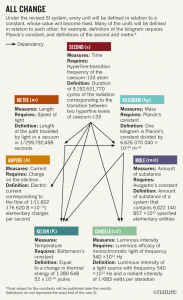Decrypting the Enigma message keys were crucial for the Allied efforts in World War I, but how is encryption used today? Technology has advanced considerably from the rotor cipher machines of the 1910’s.
Today, encryption and cryptography relies on randomness. A computer or a code cannot generate truly random numbers, and if an encryption key is not random it can be duplicated. Any physical or experimental measurement will always have inherent uncertainties due to the process or the inaccuracy of the measurement – this is truly random.
However, creating truly random numbers is time consuming and expensive, so pseudorandomness is used instead. Pseudorandom is defined by Merriam-Webster as “[numbers] selected by a definite computational process but that satisfy one or more standard tests for statistical randomness”.
Cloudflare, a company based out of San Francisco, uses a wall composed of 100 lava lamps, to protect its users’ data. Uber, OKCupid, and Fitbit are among the 6 million websites protected by Cloudflare.

Lava Lamps. Mike Mozart Flickr
A camera takes pictures of the blobs and lights created by the wall of lamps and converts it into a stream of random data. Because the flow of the “lava” is unpredictable (ie. random) it is an ideal source to generate pseudorandom numbers.
However, it’s not just the lamps that are recorded, but the ambient noise of the camera as well, adding another level of randomness.
This is then used to create unpredictable encryption keys by using a deterministic algorithm which inputs a random value (called a seed) and outputs more random values. This algorithm is called a cryptographically secure pseudorandom number generator. These are pseudorandom numbers.
Cloudflare handles 10% of the total internet traffic, so the camera takes pictures of the “Wall of Entropy” every millisecond, all day, every day.
The company also has offices in London and Singapore that each use another unique tactic to generate randomness. The London office uses a chaotic pendulum (see video below) and records its movements and the Singapore office uses a radioactive source.

In a world where our lives are documented online, providers like Cloudflare are key to keeping us and our data safe.



